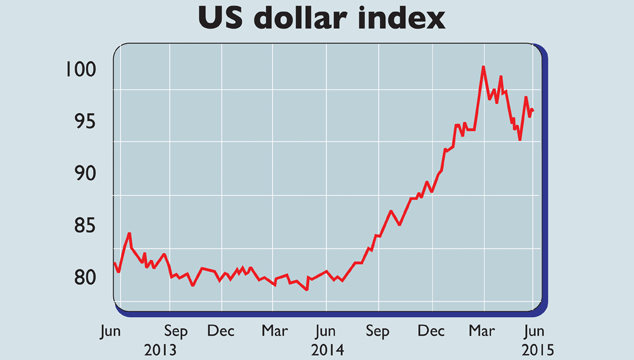
The dollar had “an extended wobble” this spring, says Robin Wigglesworth in the Financial Times. The US dollar index, which tracks the greenback’s progress against a basket of major trading partners’ currencies, hit a 12-year high in March before falling back.
But in the past few days it has found its feet again, and the rally looks set to continue. The main reason to think so is the improving macroeconomic backdrop. Investors are increasingly confident that the world’s biggest economy, accounting for 23% of global GDP, has “emerged from its first-quarter lull”, says Moody’s Ryan Sweet.
In May, 280,000 new jobs were created, the strongest monthly tally in half a year. The payroll figures for the previous two months were revised higher, while another 400,000 people entered the labour force, reflecting growing optimism. Annual wage growth hit 2.3%, a two-year high. Other data for May, notably car sales, also look encouraging. Consumption, which comprises around 70% of GDP growth, has been lacklustre of late, but should strengthen as falling oil prices boost spending power, says The Economist.
Shoppers appear to have banked the recent windfall from cheaper fuel. But now not only does it cost less to fill up a car, but inflation is fading for goods such as food, which are expensive to transport and thus affected by energy prices. “As the benefit of cheaper oil feeds through the supply chain, the increase in income may seem more permanent, and so spur spending.”
The upshot, says Société Générale’s Kit Juckes, is that the US data now look sufficiently strong to persuade investors that interest rates will finally begin to rise in September. That implies higher yields on US assets, making the dollar more attractive. Meanwhile, central banks in the eurozone and Japan are still printing money. They will both keep doing so, well into next year, while the Bank of Japan has said it might print even more.
In other words, it will be a very long time before interest rates rise in either region. And ongoing quantitative easing also tends to weaken a currency. As a result, the US dollar, backed by a strengthening economy, looks very appealing compared to either the euro or the Japanese yen. Deutsche Bank expects the dollar, now at around $1.12 to the euro, to climb “at least [to] parity” by the end of the year.